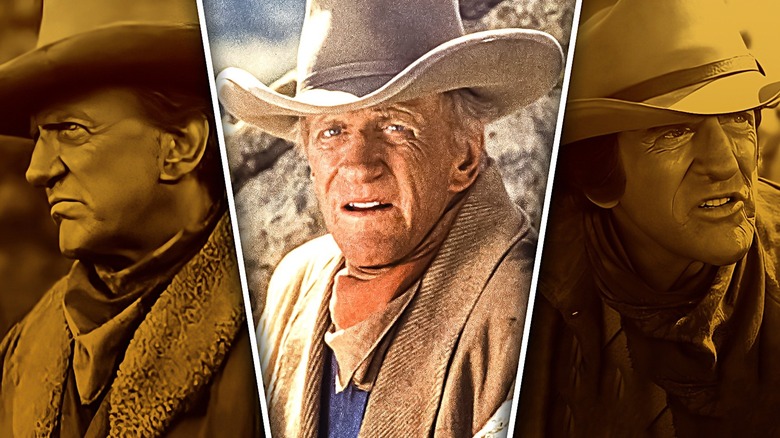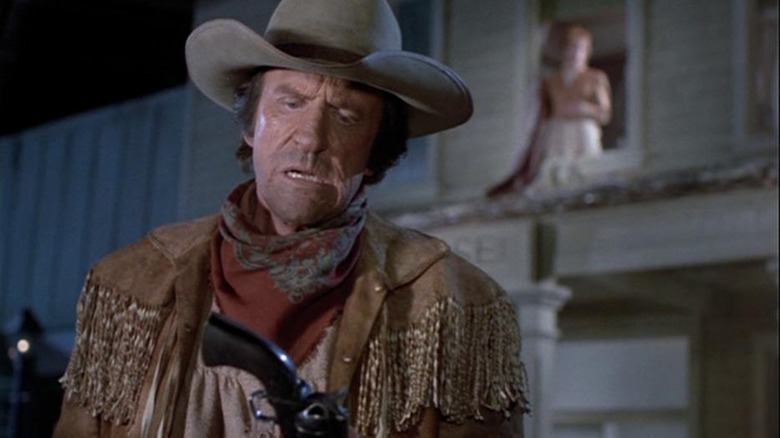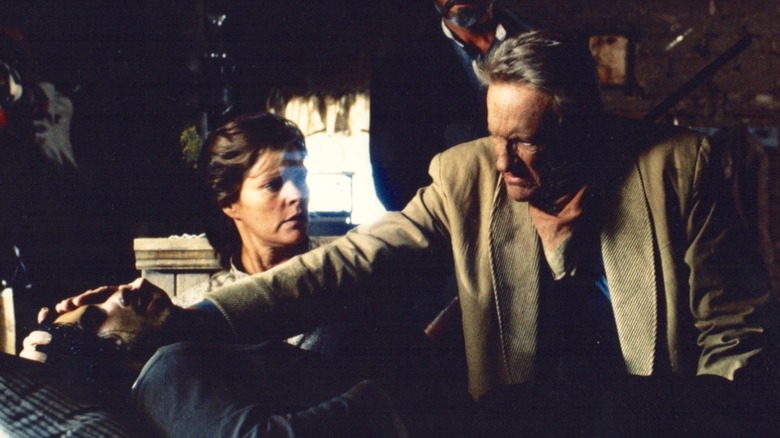Norman Macdonnell and John Meston’s “Gunsmoke” drama series aired on CBS for 20 uninterrupted seasons (!), a feat that feels even more impressive due to the consistent quality maintained throughout its run. Initially a radio series that broadcast between 1952 and 1961, “Gunsmoke” gained steady enough popularity to warrant a television adaptation in 1955, whose half to one-hour episodes culminate to form an epic Western saga for the ages. The nexus of “Gunsmoke” is one lawman Marshal Matt Dillon (James Arness) tasked to maintain order in Dodge City, Kansas, and his exploits underline the brutality of the Old West, challenging stereotypes attached to similar figures molded as unambiguously heroic. Although the show did employ archetypal characters — such as the loyal sidekick Chester Goode (Dennis Weaver) and the trustworthy town physician Doc Adams (Milburn Stone) — an appropriate amount of nuance grounds “Gunsmoke,” which works best when rooted in morally grey vignettes.
However, we’re not here to talk about the merits of the CBS series today, but to figure out the watch order for the five made-for-television movies released after the show’s lengthy run instead. The first “Gunsmoke” movie was commissioned as a reunion project by CBS in 1987 and saw Arness and longtime cast member Amanda Blake (who played Kitty Russell) return to their roles, along with most of the supporting cast also returning. Although it is not difficult to simply follow the release order for the five made-for-TV “Gunsmoke” films, it can be challenging to contextualize the chronology of the events, as some plots are based on episodes from the primary series. Without further ado, let us dive into the gritty, uncompromising world of “Gunsmoke,” where chaos hides at every corner of Dodge City and beyond.
The only correct way to watch the Gunsmoke movies
To fully comprehend 1987’s “Gunsmoke: Return to Dodge,” it is necessary to have a rough idea about how the parent series ended, and why this reunion TV movie is so hyped. The return of most of the principal cast, especially Arness and Blake, forms the emotional crux of this particular entry, while also allowing the iconic Matt Dillion to continue his gunslinging even after retirement. In “Return to Dodge,” Dillon is a fur trapper who ends up stabbed near a riverbank, and is carried all the way to, you guessed it, Dodge City by the folks who find him wounded. After being nursed back to health, Dillon reunites with Miss Kitty, but this joyful homecoming is marred after gunslinger Will Mannon (Steve Forrest) is released from jail. Of course, the Marshal is Mannon’s prime target for revenge, and the two engage in a lengthy game of cat-and-mouse over the rest of the runtime, and this confrontation ends in brutal fashion.
After watching “Return to Dodge,” it is time to move on to 1990’s “Gunsmoke: The Last Apache,” which revisits the episode “Matt’s Love Story.” Instead of being set in Dodge, the story shifts to Arizona and Mexico, where Dillon receives a letter from the Yardner Cattle Company, which is a reference to the widowed rancher in season 19, episode 3 (originally played by Michael Learned, who reprises her role in the film). The journey to the Arizona ranch is rife with shenanigans, with news of Apache Chief Geronimo (Joaquin Martinez) being on the run tinting the turn of events, with war chief Wolf (Joe Lara) posing a formidable threat. Dillon also grapples with emotional revelations that alter the trajectory of his existence, injecting high personal stakes into this thrilling adventure.
Why the Gunsmoke films feel so special
Even though the “Gunsmoke” series ran for 20 whole seasons, the cast and crew were eager to continue this epic Western, and the news of the show’s cancellation (which was solely CBS’ decision) left them stunned at the time. 1992’s “Gunsmoke: To The Last Man” continues the epic story of Dillion — now a rancher — getting embroiled in a family feud that turns real ugly when the Grahams abduct his daughter Beth (Amy Stoch). There is some rewriting of canon to an extent, as Kitty’s memory feels like a distant dream when juxtaposed with Dillon’s relationship with Beth (and her late mother, Mike), whose presence acts akin to a moral compass for Dillon amidst the Pleasant Valley War.
Last, but not least, finish off the “Gunsmoke” marathon with 1993’s “Gunsmoke: The Long Ride” and 1994’s “Gunsmoke: One Man’s Justice.” “The Long Ride” starts on a merry note, as Beth is getting married and everyone is busy with the celebrations, but something goes terribly wrong: poor Dillon is charged with murder and has a massive bounty on his head. Having no choice but to flee, Dillon sets out to catch the real perpetrator and clear his name in the process, while Beth aids her father navigate messy gang dynamics and obligatory saloon shootouts.
“One Man’s Justice” is the final stop at the “Gunsmoke” station, with Arness embodying Dillon one last time. This time, a stagecoach robbery leads to three victims being wounded, including Dillon’s son-in-law, and the retired marshal offers all of them shelter out of goodwill. However, an unfortunate death leads to an aggrieved son’s flimsy plan for revenge, prompting Dillon to step in and shoot some bad dudes one final time (with a mysterious partner) before retiring to a peaceful life for good.





